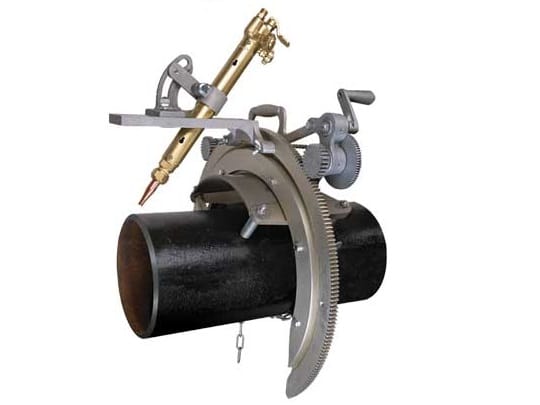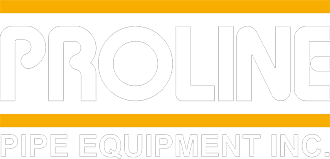Pipe beveling is a critical step in pipeline and industrial welding applications. It refers to the process of cutting a sloped edge (or “bevel”) on the end of a pipe to prepare it for welding. Among the most widely used tools for this task are saddle-type pipe beveling machines, with H&M and Mathey Dearman being two of the most recognized brands in the industry.
How Saddle-Type Pipe Beveling Machines Work
Saddle-style beveling machines are mechanical tools designed to clamp around the outside diameter of a pipe. Once secured, they guide a cutting torch in a precise circular path around the pipe to create a beveled edge. These machines use a gear-driven carriage that rides along a fixed track, allowing the torch to maintain consistent distance and angle throughout the cut. The operator typically powers the torch manually or with a motor, depending on the model.
What makes saddle bevelers unique is their stability and accuracy. By using a saddle that matches the pipe’s curvature, the machine stays firmly aligned during operation, even on larger-diameter pipe.
Applications of H&M and Mathey Dearman Beveling Machines
H&M and Mathey Dearman beveling machines are commonly used in industries such as:
Oil and gas pipeline construction
Power generation
Petrochemical and refinery work
Shipbuilding
Industrial fabrication shops
They are especially useful in field environments where precise bevels are needed for open-root welding or when automated solutions are not feasible. These machines can be used on carbon steel, stainless steel, and other metal pipes, and they can produce standard bevels, compound bevels, or J-preps depending on the cutting setup.
Benefits of Using H&M and Mathey Dearman Bevelers
One of the biggest advantages of these machines is precision. Manual grinding or handheld torch cutting can introduce inconsistencies that lead to weld defects or alignment problems. A saddle beveling machine eliminates much of this variability by guiding the torch on a rigid, repeatable path.
Portability is another key benefit. Despite their robust design, most H&M and Mathey Dearman units are portable enough for use in remote job sites. Many models can be disassembled for easier transport and reassembled on-site without the need for specialized tools.
These machines are also known for their la durabilité. Constructed primarily from steel or cast aluminum, they’re built to withstand tough working conditions and continuous use.
Drawbacks and Limitations
While highly effective, saddle-type beveling machines are not without their drawbacks. Setup can be time-consuming, especially when working with larger-diameter pipe or making multiple cuts in different locations. The machine must be carefully aligned and clamped before each use to ensure accuracy.
Another limitation is their pipe diameter range. Each machine is designed for a specific pipe size or a limited range, meaning multiple units or interchangeable saddles may be needed to handle different pipe sizes.
Finally, these machines are typically limited to straight pipe. They don’t work well on fittings, elbows, or pipes that are out-of-round or heavily corroded.
H&M vs Mathey Dearman: What’s the Difference?
Both brands are well-respected, but there are some differences worth noting. H&M bevelers are known for their simplicity and ruggedness. Their machines often have fewer moving parts, which can make them easier to maintain. Mathey Dearman machines, on the other hand, offer a bit more refinement in terms of adjustability and accessories. Some Mathey models support motorized options or dual torch setups, which can speed up production in shop environments.
Choosing between the two often comes down to personal preference, job site requirements, and the specific beveling needs of the project.


